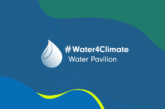
Dr. Arvind Kumar*
What is the true cost of natural resources in a nation that reveres them as sacred, yet treats them as an unaccountable entitlement? Pricing the so-called “priceless” resources is essential because it brings economic visibility to their ecological and social value. When resources are freely available or under-priced, they are often overused, wasted, or degraded. This leads to unsustainable extraction, pollution, and inequitable access, particularly affecting the poor and marginalized. In India, water is more than a resource—it is emotional, cultural, and often seen as non-negotiable. This reverence has shaped the widespread belief that water, especially for farming and basic domestic use, should be free or nominally priced. But in today’s reality of rapid population growth, urban stress, and escalating climate risks, this mindset is proving unsustainable. The World Economic Forum’s Global Risks Report 2025 ranks water shortages among India’s top environmental threats. Ironically, even as some pay exorbitantly for bottled or tanker water, the illusion of “free water” persists. According to the United Nations, the right to water entitles everyone to have access to sufficient, safe, acceptable, physically accessible and affordable water for personal and domestic use. Although the right to water in India is implicitly recognized under Article 21 of the Constitution, however it’s time to shift the conversation—not to commodify water, but to value it more wisely. Can structured, equitable pricing strengthen access, empower communities, and support sustainability?
By assigning a fair and transparent price to natural resources such as water—based on their scarcity, ecological role, and the cost of replenishment—we create incentives for conservation, efficient use, and technological innovation. Pricing also helps internalize environmental externalities, meaning the hidden costs of resource degradation are accounted for in economic decision-making. However, pricing must be equitable. Safeguards are needed to ensure that basic human rights—like access to safe drinking water—are protected, especially for vulnerable populations. Differential pricing, targeted subsidies, and participatory governance can help strike this balance. Ultimately, pricing natural resources responsibly is not about commodifying nature, but about valuing it appropriately to ensure its longevity for future generations.
India’s challenge isn’t one of absolute scarcity. In fact, between March and May 2025, pre-monsoon rainfall was 42% above normal. Yet cities like Delhi and Bengaluru faced acute shortages, while others battled floods. The real crisis lies in poor planning, uneven distribution, outdated infrastructure, and mismanaged supply.
Valuation for Decision-making
To understand why water pricing matters, we need to look at the invisible costs behind our taps. Water travels from rivers, lakes, or aquifers through an elaborate and costly network involving extraction, purification, transportation, and delivery. In just three years, water infrastructure projects have run ₹17,000 crore over budget, and nearly 40% of treated water in urban areas is lost to leaks. Add to that the energy required for pumping and distribution and it’s clear that the true cost of water is much higher than what most consumers recognize.
Still, the expectation of “free water” persists, rooted in the valid belief that access to water is a human right. But free water often leads to undervaluation and overuse. In Delhi, for instance, subsidized water policies have led to rampant wastage, neglected maintenance, and the rise of water mafias who exploit supply gaps in underserved neighbourhoods. According to the Economic Survey of Delhi 2023–24, over 52% of the city’s water is lost to theft, leakage, and illegal diversion, with residents in areas like Sangam Vihar paying up to ₹2,500 for 2,000 litres—ten times the official rate. This black market thrives despite government efforts, leaving the poorest to pay the most for unreliable and often unsafe water, highlighting how poorly managed subsidies can deepen both inequity and inefficiency.
The public health consequences of unsafe water in India are severe—nearly 20% of communicable diseases nationwide are linked to contaminated water, with the National Centre for Disease Control reporting over 1.1 million cases of acute diarrheal disease in 2024 alone. In states like Odisha and West Bengal, families spend an average of ₹1,200–₹1,500 per illness episode on medical bills, compounding financial stress, lost productivity, and a burden that robs them of opportunities for education, work, and caregiving. Unreliable water supply thus undermines not only health but also opportunity and dignity for millions across the country.
And this isn’t limited to urban areas. Agriculture remains India’s largest consumer of freshwater—accounting for nearly 80% of total usage. The absence of effective water pricing, with heavily subsidized or free canal and groundwater in this sector, has led to rampant over-extraction and inefficient practices. According to recent research by NITI Aayog and the Ministry of Jal Shakti, introducing a nominal water price of just ₹2–₹5 per cubic meter could help shift cropping patterns to less water-intensive alternatives, saving up to 8% of irrigation water and boosting net farm margins by 27%.
Strengthening the Water Economy gaps
In the context of a water economy, it’s not enough to simply meet growing water demand—whether for agriculture, industry, or domestic use. We must also ensure the sustainability of the sources themselves: rivers, lakes, aquifers, glaciers, and rainfall systems. Meeting water demand is necessary for economic and social development—but doing so at the cost of source sustainability is a false economy. The true strategic lever in a water economy lies in achieving a balance between usage and natural regeneration, ensuring that water remains available, clean, and abundant for the long term. Global institutions like the World Bank emphasize that effective water pricing—paired with targeted subsidies for the most vulnerable—can drive conservation, fund infrastructure, and reduce the hidden costs of poor quality and unreliable supply. Closer to home, Prime Minister Narendra Modi, in his 2025 national addresses, echoed this shift in thinking. He called for a move beyond merely increasing supply to smarter allocation, better management, and treating water as a national asset—not just a free commodity. This evolving policy narrative aligns with a growing consensus: India’s water future depends not just on quantity, but on how wisely we manage, allocate, and value every drop.
As India charts a path toward becoming a $1 trillion water economy by the early 2030s, driven by agriculture, health, industry, and urban growth, the need for massive investment in smart infrastructure—leak-proof networks, advanced treatment, digital metering, and resilient storage—becomes critical. Like roads and electricity, water systems must be sustainably financed. This calls for reimagining water as an ecosystem service, not just a utility. While the Central Government levies cesses like the Water (Prevention and Control of Pollution) Cess, how much of that funding actually supports source sustainability remains opaque. Bridging this gap demands greater transparency and targeted investment. Ultimately, the question is not whether we pay for sustainable water—but who will, if not all of us: citizens, businesses, and institutions alike?
Countries like Singapore and Australia offer useful models. Singapore’s water is priced to reflect its true cost, including conservation incentives, while Australia’s reforms during droughts promoted equitable access and reduced waste. Their experience shows that transparent, fair pricing drives responsible use and enables infrastructure upgrades. India can adapt such approaches without burdening its most vulnerable. A tiered pricing model—low or subsidized rates for essential use and higher charges for excessive consumption—can balance affordability with accountability. Additionally, dynamic pricing based on season and regional availability would help align tariffs with local realities, encouraging water capture during abundance and conservation during scarcity. The future lies in combining traditional wisdom with smart technologies—like IoT leak detection and AI-based water forecasting. In Meghalaya, a Payment for Ecosystem Services (PES) model, implemented by the India Water Foundation and the Meghalaya Basin Development Authority, showcases how tribal communities can conserve upstream forests and springs, ensuring downstream water security while enhancing livelihoods and community stewardship.
Way Ahead
To advance smarter water governance without excluding vulnerable populations, India must adopt a tiered pricing model—subsidizing basic needs while progressively charging for higher consumption. Dynamic tariffs, adjusted for seasons and local availability, can promote both affordability and conservation. Yet, pricing alone isn’t enough. Sustainable water management demands an integrated approach, rooted in nature-based solutions and community participation. Proven practices like rainwater harvesting—from Chennai’s rooftop mandates to Rajasthan’s traditional johads and khadins—can transform water availability. However, scaling them requires stronger policy integration and routine maintenance. Protecting wetlands, often dismissed as wastelands, is equally critical. These natural sponges absorb floods, filter pollutants, and recharge aquifers. Their loss in cities like Delhi and Mumbai has worsened flooding, while rural areas face greater drought risk. In the end, we must confront the reality that water is already being priced—often unfairly and invisibly. It is no longer a question of denying access; it is a question of guaranteeing it—sustainably, equitably, and transparently. As India grapples with climate risks, urban stress, and rising demand, valuing water through thoughtful pricing, nature-based solutions, and inclusive governance is essential. Let us begin to treat water not just as a free-flowing commodity, but as the precious, powerful, and priceless resource it truly is.
*Editor, Focus Global Reporter






